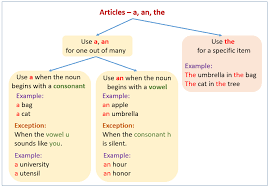The Art of In-Depth Analysis: Unveiling the Layers of Understanding
When it comes to gaining a profound understanding of a subject, in-depth analysis plays a crucial role. It involves delving beneath the surface, peeling back the layers of information, and uncovering the nuances that shape our perceptions.
At its core, in-depth analysis requires a meticulous approach. It goes beyond skimming the surface and demands a deeper engagement with the subject matter. Whether it’s examining a piece of literature, dissecting a scientific theory, or scrutinizing a historical event, in-depth analysis challenges us to question assumptions and seek out hidden connections.
One of the key aspects of in-depth analysis is critical thinking. By critically evaluating information and sources, we can discern between fact and opinion, identify biases, and draw informed conclusions. This analytical process not only enhances our knowledge but also sharpens our ability to think logically and rationally.
Moreover, in-depth analysis fosters a holistic perspective. By considering different viewpoints and exploring various angles, we gain a more comprehensive understanding of complex issues. It allows us to appreciate the intricacies and subtleties that may have been overlooked at first glance.
In today’s fast-paced world inundated with information, the art of in-depth analysis is more important than ever. With so much data at our fingertips, distinguishing between what is relevant and what is noise requires keen analytical skills. In-depth analysis empowers us to separate signal from noise and extract meaningful insights from the vast sea of information.
In conclusion, in-depth analysis is not just about scratching the surface—it’s about digging deeper, unraveling complexities, and illuminating truths that may have remained hidden. By honing our analytical abilities and embracing a curious mindset, we can embark on a journey of discovery that enriches our understanding of the world around us.
5 Essential Tips for Conducting an In-Depth Analysis
- Start by clearly defining your research question or objective.
- Gather data from reliable sources to support your analysis.
- Utilize various analytical tools and techniques to explore the data thoroughly.
- Consider different perspectives and potential biases that may influence your analysis.
- Document your findings and conclusions in a structured manner for easy reference.
Start by clearly defining your research question or objective.
To embark on a journey of in-depth analysis, it is essential to begin by clearly defining your research question or objective. By establishing a focused and specific inquiry, you set the foundation for a structured and purposeful exploration of the subject matter. This initial step not only guides your research direction but also helps streamline the analytical process, enabling you to delve deeper into the core issues at hand. Clarity in defining your research question ensures that your analysis remains on track and facilitates a more systematic approach to uncovering insights and understanding complexities within the topic.
Gather data from reliable sources to support your analysis.
When engaging in in-depth analysis, it is essential to gather data from reliable sources to fortify your insights and conclusions. Relying on credible information not only adds credibility to your analysis but also ensures the accuracy and validity of your findings. By sourcing data from reputable sources, you can strengthen the foundation of your analysis and build a more robust argument that withstands scrutiny. Embracing reliable sources enhances the integrity of your work and elevates the quality of your in-depth analysis.
Utilize various analytical tools and techniques to explore the data thoroughly.
To achieve a comprehensive in-depth analysis, it is essential to leverage a diverse range of analytical tools and techniques to thoroughly explore the data at hand. By utilizing various tools such as statistical models, data visualization software, and qualitative research methods, analysts can uncover valuable insights and patterns that might otherwise remain hidden. These tools not only facilitate a deeper understanding of the data but also enable analysts to approach the information from multiple perspectives, enhancing the richness and accuracy of their analysis.
Consider different perspectives and potential biases that may influence your analysis.
When engaging in in-depth analysis, it is essential to consider various perspectives and potential biases that may impact the interpretation of information. By acknowledging and examining different viewpoints, we can gain a more comprehensive understanding of the subject matter. Being aware of our own biases and those inherent in the sources we rely on allows us to approach our analysis with a critical eye, ensuring a more balanced and insightful evaluation. This practice not only enhances the depth of our analysis but also promotes a more nuanced and well-rounded perspective on the issues at hand.
Document your findings and conclusions in a structured manner for easy reference.
When engaging in in-depth analysis, it is essential to document your findings and conclusions in a structured manner for easy reference. By organizing your insights systematically, you not only ensure clarity and coherence but also facilitate quick access to key information when needed. Structured documentation allows you to track the progression of your analysis, revisit important details, and present your conclusions effectively to others. Whether through outlines, summaries, or visual aids, structuring your findings enhances the credibility and usability of your analysis, enabling a more efficient and comprehensive understanding of the subject matter.



